The holidays are not the holidays without a gingerbread house, so we set out to build the best one ever. We had two basic requirements: it had to look good, and it had to taste good. Check out the following tips to construct your own eye- and palate-pleasing creation.
Make a template
You can find a variety of gingerbread house templates online and print them out. If you’re feeling creative, try making your own like we did.
A good tip is to not make any pieces too long, especially the roof, as it may be prone to caving. A rule of thumb is to not make any one piece longer than 20 cm, unless your gingerbread is particularly stiff. If you’d like to make your house bigger, you can make additions. A template allows you to plan the look of your house ahead of time and makes it much easier to cut your gingerbread pieces.

Photo by Ani Yalamanchali
Make your own gingerbread
We used this Food Network recipe to make both the gingerbread and the royal icing and replaced the cake flour with 5 and 1/2 cups of all-purpose flour. This produced some of the best gingerbread I’ve eaten and struck a good balance between fluffy and firm. Have some extra flour on hand, as the dough does tend to become sticky as you work with it.
Chilling the dough makes it much easier to roll out, and if you find it is becoming too sticky, add some flour to your hands and rolling pin. You can also try chilling an aluminum baking sheet in the fridge and placing it on the dough to cool it down. Let the gingerbread cool and harden, preferably overnight, before assembly. It would also be wise to make the roof first so it has more time to harden and to roll the roof pieces thinner than the base pieces.
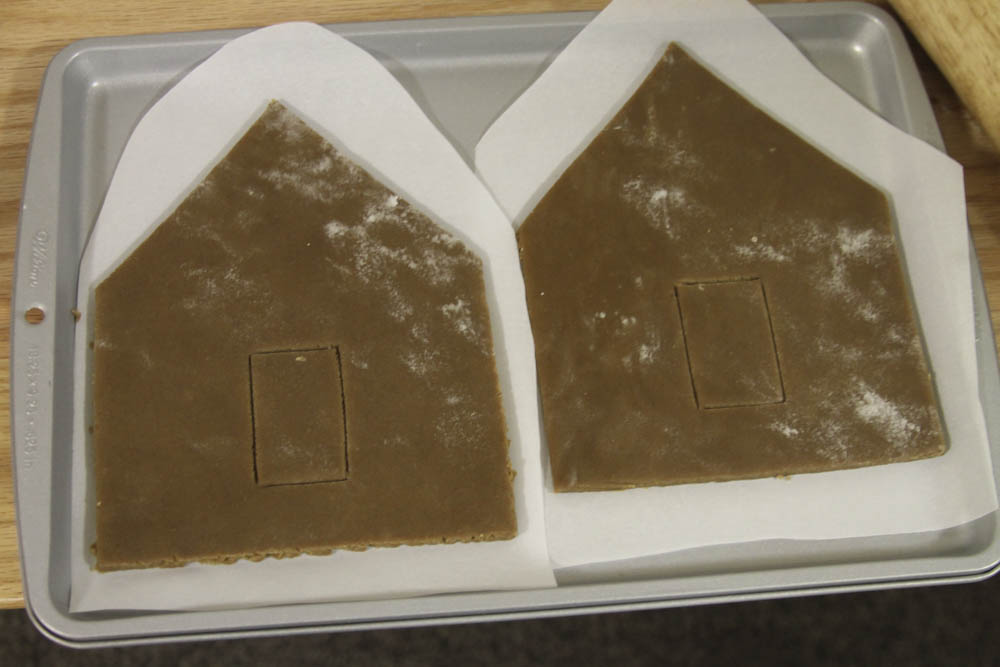
Photo by Ani Yalamanchali
Use edible hot glue
NPR actually asked a civil engineer to build a gingerbread house. No joke. The best advice? Use melted down gummy bears to adhere the house. Simply place your gummy bear victims in a small pot and melt on low heat. Then use a popsicle stick, chopstick or small spoon to apply to your house piece edge.
It literally functions like hot glue, except in edible, fruity form. Take care when handling the hot stuff. You might have to hold your house in place for several minutes, as heavy pieces like the roof are susceptible to slide, but as soon as the gummy sets, your house is not going anywhere. (In fact, it might even be a little difficult to pull apart to eat).
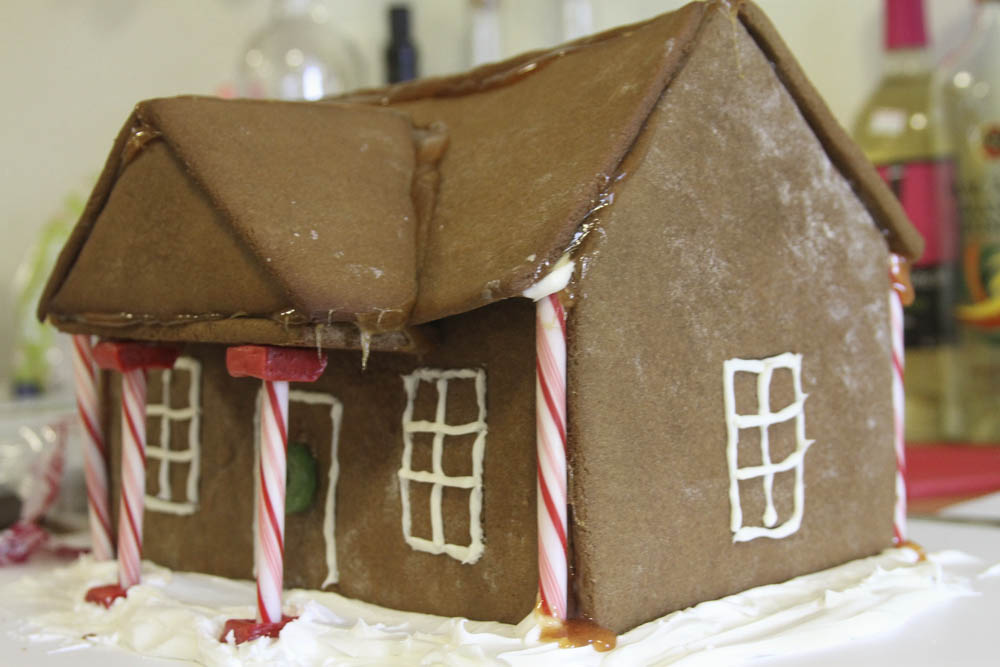
Photo by Ani Yalamanchali
Use a mix of icing types
We used our homemade royal icing to adhere the gingerbread house pieces to our foam board base because it becomes very stiff as it dries. While this is good for keeping the house in place, it’s not as nice to eat. Luckily, store-bought icing often contains ingredients to prevent hardening, especially the ones that are labeled creamy. We cut the corner off a resealable plastic bag to pipe this on the windows, door and roof decorations, as well as spread it around the house to look like snow.
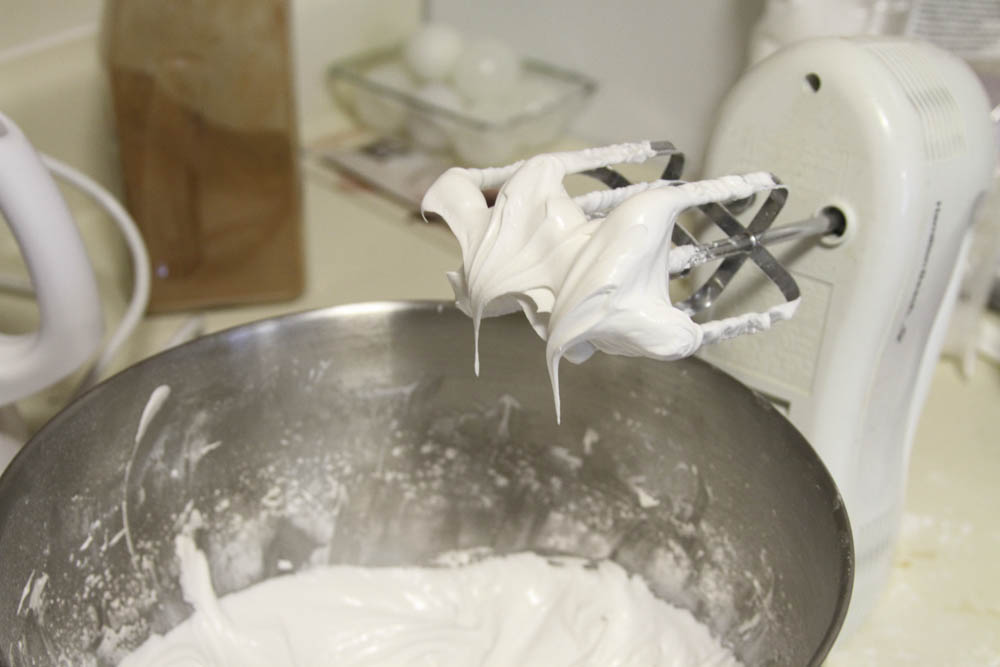
Photo by Ani Yalamanchali
Get creative with decorations
We broke pretzel pieces and gummy glued them to make fences, used candy canes as columns and Starbursts as column bases (we microwaved them for 5-10 seconds to get them pliable). We also used peanuts to make the front pathway, which actually turned out very tasty with the icing.
Feel free to explore and experiment. Some also suggest using cereal pieces for roof tiles, but after some contemplation, we decided to stick with a classic frosted roof. Part of me is convinced that Wheat Thins would make the ideal roof tile, but I’m not sure how that would taste……
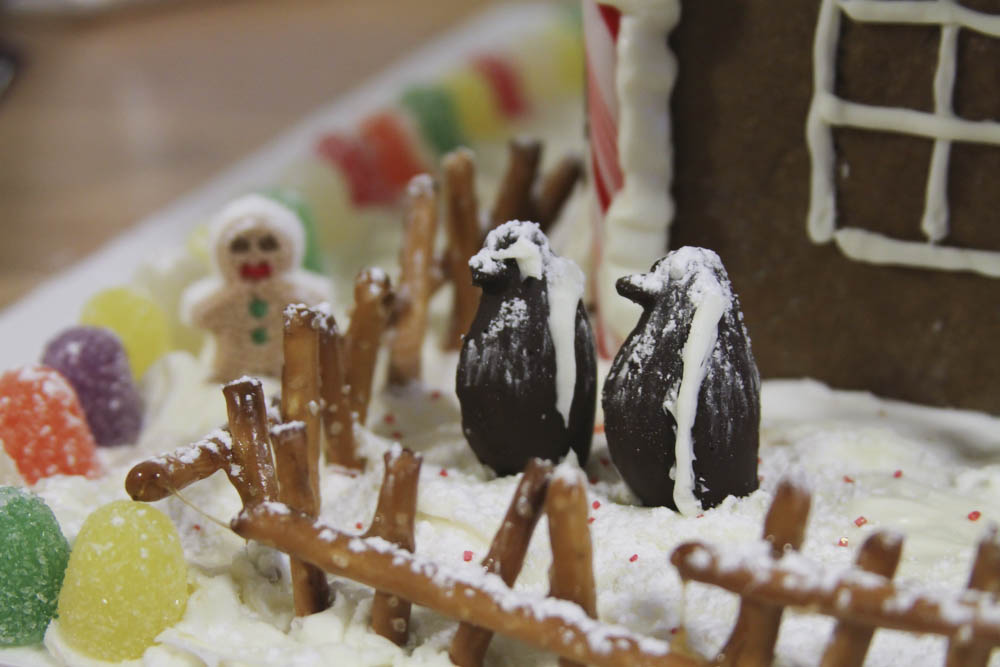
Photo by Ani Yalamanchali
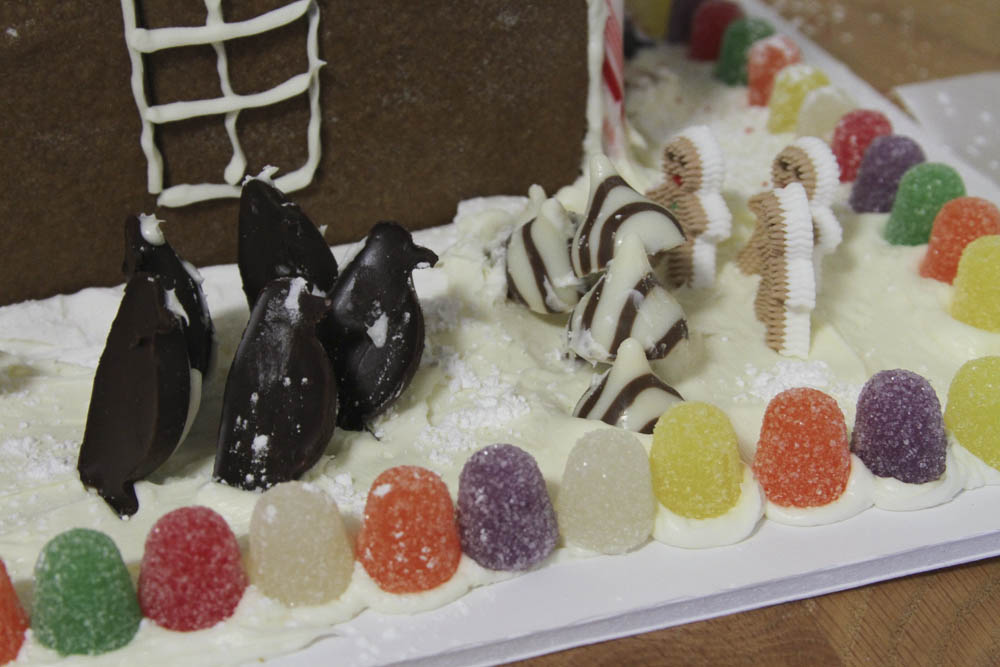
Photo by Ani Yalamanchali
Of course, it’s practically a requirement to sprinkle powdered sugar over your completed house, even if it’s not actually snowing outside. I also accidentally broke the head off one of our candy gingerbread man, and one of our chocolate penguins was missing a beak. This combined with our red sprinkles and fictional feud between the penguins and the gingerbread men inspired a rather gruesome backyard scene…

Photo by Ani Yalamanchali
Happy eating!
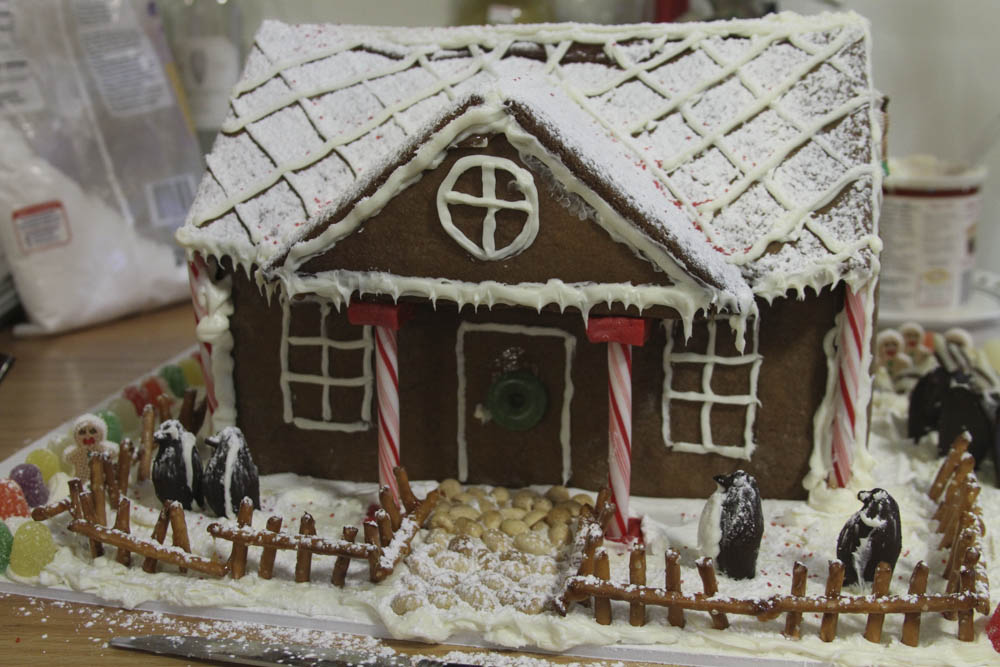
Photo by Ani Yalamanchali
Want even more gingerbread house building tips and tricks?
Build A Gingerbread House That Won’t Fall Down

